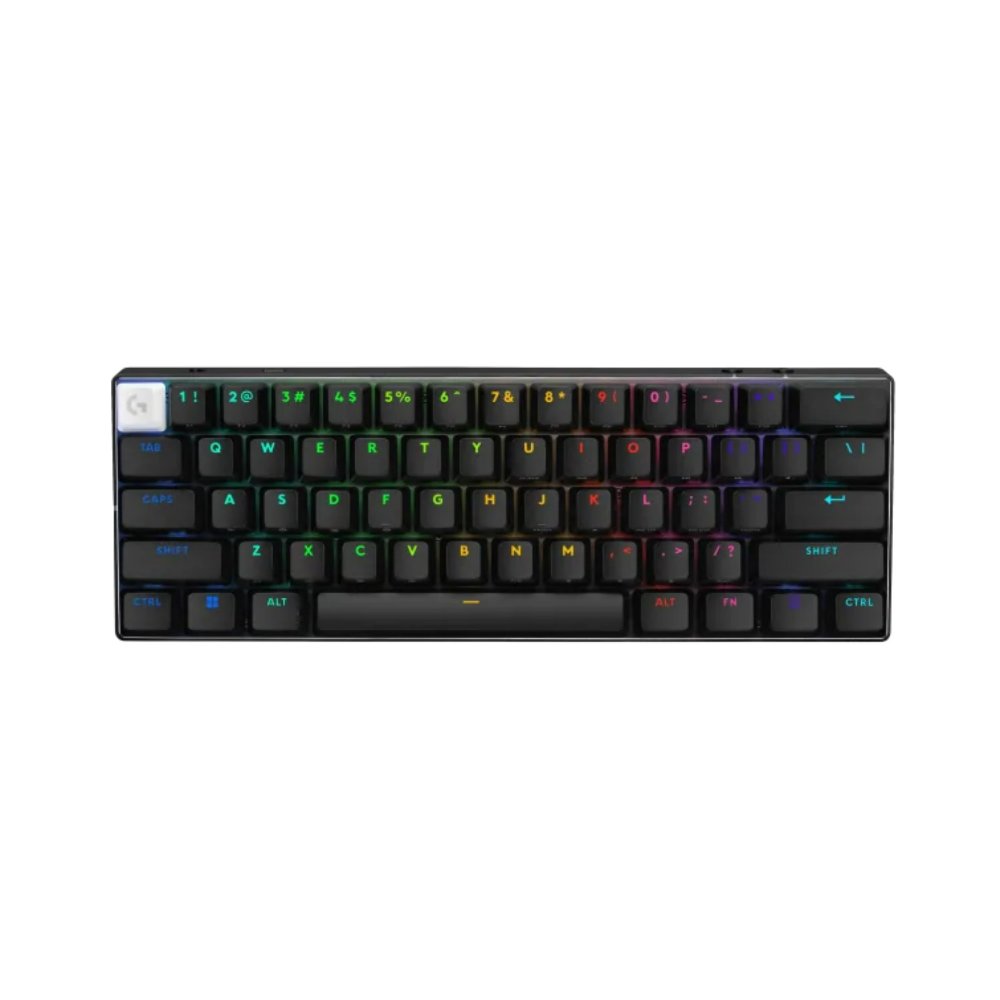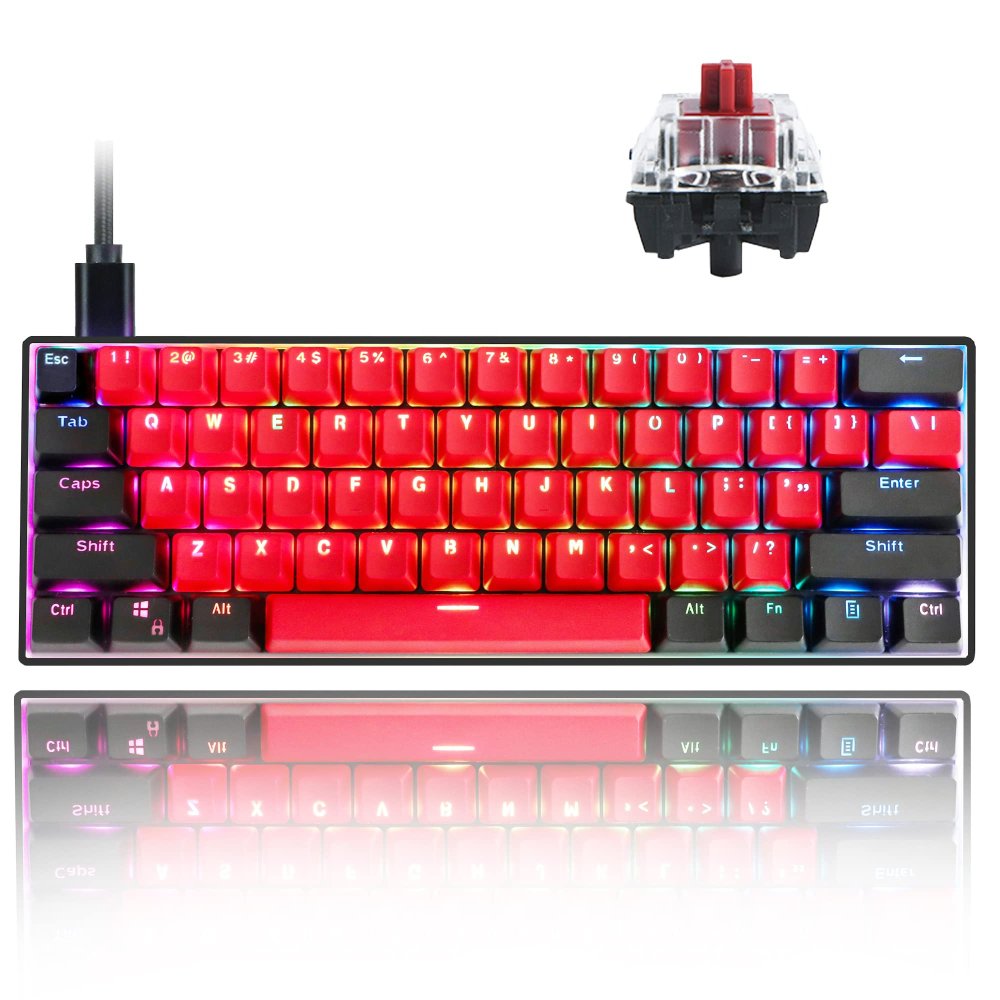Identifying the Type of Keyboard Problem
When your keyboard is not working, identifying the root cause is the first crucial step. Doing so can guide you on the right path to fixing the issue efficiently. Keyboard problems often fall into two categories: physical damage or wear and tear, and software or driver issues.
Physical Damage or Wear and Tear
Physical damage to your keyboard can result from drops, spills, or heavy use over time. Check for visible signs like broken keys or deformations. If keys are sticking or unresponsive, debris or liquid could be the culprit. Assessing wear and tear involves closely inspecting each key. Listen for irregular sounds or inconsistencies in keypress responses. Confirm if the issue is with a specific key or broader sections of the keyboard. If physical damage is extensive, professional repair or replacement might be needed.
Software or Driver Issues
Software or driver conflicts can also render a ‘keyboard not working’ scenario. Key indicators include the keyboard functioning in BIOS or on another computer but not in your current operating system. Investigate recent software installations that may interfere with the keyboard’s performance. Verify through your system settings if the correct keyboard layout is selected. Driver issues could stem from outdated, corrupt, or incompatible keyboard drivers. Regular updates and driver checks ensure compatibility and smooth functioning. Tackle these issues by updating or reinstalling keyboard drivers and checking for operating system updates, especially if you experience the problem after a system upgrade or change.

Troubleshooting Hardware Issues
Once you’ve determined the issue isn’t stemming from software or driver conflicts, it’s time to delve into possible hardware problems. Hardware issues can often be resolved with some simple troubleshooting steps that don’t require advanced technical knowledge.
Checking Connections and Ports
Before proceeding with more in-depth fixes, start with the basics: ensure your keyboard’s connections are secure. If you’re using a USB keyboard, unplug it and then plug it back in, ensuring the connection is firm. For wireless keyboards, check if the batteries need replacing and that the receiver is properly connected to the USB port. Occasionally, ports can malfunction, so try connecting to a different USB port to rule out this issue.
Cleaning Your Keyboard
Over time, dust and debris can accumulate beneath the keys, causing some of them to stick or become non-responsive. Use a can of compressed air to gently blow away any dirt. Turn off your computer and carefully remove the keys if possible for a more thorough cleaning. Soft, lint-free cloths and isopropyl alcohol can clean the keyboard surface without damaging the electronics.
Examining the Keyboard Layout and Key Function
A seemingly non-working keyboard can sometimes be due to an incorrect layout setting. Ensure that the keyboard layout matches your regional setting. Also, test each key individually to confirm if it’s a single key failure or a broader problem. Software like keyboard testers can help you identify non-functioning keys. If specific keys are the problem, there might be a need for physical repair or replacement. Remember, some issues might appear to be hardware-related but are actually due to incorrect settings, so check your system preferences to confirm your layout is properly configured.
Resolving Software and Driver Conflicts
When a ‘keyboard not working’ issue is due to software or drivers, resolving these conflicts is key. Drivers are pieces of software that allow your operating system to communicate with the keyboard. If they’re outdated or corrupt, your keyboard might not function properly.
Updating Keyboard Drivers
To ensure your keyboard communicates efficiently with your computer, updating drivers is essential. Begin by going to your computer’s Device Manager. Locate the keyboard section and right-click on your keyboard device. Choose ‘Update driver’ and follow the prompts to install the latest driver version. If updates are available, they will download and install. Restart your computer afterwards to complete the process.
Checking for Operating System Updates
Sometimes, the issue stems from the operating system itself. Staying current with updates can fix bugs affecting keyboard functionality. Access your system’s update feature; on Windows, it’s ‘Windows Update’, and on Mac, it’s ‘Software Update’ in System Preferences. Download and install any available updates and restart your system. Regularly checking for updates can prevent many issues.
Restoring Default Keyboard Settings
If updates don’t solve the problem, restoring your keyboard’s default settings might help. In your system preferences or control panel, look for keyboard settings. There should be an option to reset to default. This action can address any changes that have been mistakenly applied and are affecting keyboard performance. If problems persist, it might be time to explore keyboard troubleshooter tools or consider professional assistance.

Utilizing Keyboard Troubleshooter Tools
When your ‘keyboard not working’ issues persist, using troubleshooting tools can be a beneficial next step. These tools can diagnose and resolve many issues that manual methods might miss. They cover problems related to both software conflicts and hardware malfunctions. Below, we discuss some effective tools you might consider.
Windows Keyboard Troubleshooter
Windows offers a built-in Keyboard Troubleshooter that can quickly identify and potentially fix issues. To use this tool, go to Settings, then Update & Security. Next, select Troubleshoot. You will find the Keyboard Troubleshooter under the ‘Find and fix other problems’ section. Run the tool, and follow the on-screen instructions. It scans for common issues and implements automatic fixes where possible.
Third-Party Diagnostic Software
If the Windows Keyboard Troubleshooter doesn’t solve the problem, third-party software might help. These programs often have more advanced diagnostic capabilities. They can spot issues that standard tools might overlook. Look for reputable software with positive reviews online. Examples include KeyTweak, Switch Hitter, and Keyboard Tester. Download and install the software, ensuring it is compatible with your system. Run the diagnostics and apply suggested fixes. Always download third-party software from trusted sources to avoid additional issues.
Keyboard Replacement or Professional Repair
When troubleshooting and fixing strategies for your ‘keyboard not working’ issue fail, consider replacement or professional service.
When to Consider Replacing Your Keyboard
Replace your keyboard if:
- It has extensive physical damage or wear. This could mean broken keys or irreversible liquid damage.
- Troubleshooting and updates do not fix the ‘keyboard not working’ problems.
- The keyboard is outdated and not compatible with current technology.
- Repairs are more costly than buying a new keyboard. Compare prices before deciding.
Finding a Reliable Repair Service
Finding a trustworthy repair service is vital. Here are ways to locate one:
- Check online reviews. Websites like Google Reviews and Yelp offer insights on service quality from other customers.
- Ask for recommendations. Friends, family, or colleagues might know good places.
- Verify credentials. Make sure the service provider is certified and has experience with keyboard problems.
- Compare service charges. Look for quality service at a reasonable price.
- Inquire about warranty. Good services often offer a warranty on repairs.
Choosing the right next steps when a ‘keyboard not working’ issue persists can save you from future hassles. Always consider the cost-effectiveness and reliability when deciding to replace or repair your keyboard.

Preventative Measures and Best Practices
To keep your keyboard in optimal condition, preventative measures are essential. They minimize the likelihood of future hardware malfunctions and software issues.
Regular Maintenance Tips
Regular maintenance is crucial to ensure that your keyboard remains functional and efficient. Here are some actionable tips:
- Clean your keyboard regularly: Dust and debris can lead to keys sticking or failing. Use compressed air and a soft rag to keep it clean.
- Update your software and drivers: Always ensure that your keyboard’s drivers are up-to-date. This prevents compatibility problems.
- Check cable and wireless connections: For wired keyboards, check the cables regularly for fraying or damage. Wireless users should ensure their connection is stable and batteries are charged.
- Uninstall unnecessary software: Extra software can conflict with keyboard operations. Keep your installation minimal and necessary.
- Physical inspection: Regularly inspect your keyboard for any signs of wear or damage. Address potential issues before they worsen.
Protecting Your Keyboard From Damage
Preventing keyboard damage is easier than dealing with repairs. Follow these guidelines to protect your keyboard:
- Use keyboard covers: Covers prevent dust and liquid damages. They are inexpensive and effective.
- Avoid eating and drinking near your keyboard: Spills are a common cause of keyboard malfunctions. Keep liquids and food away.
- Handle with care: Be gentle when typing or cleaning your keyboard. Abrupt actions can damage the mechanical components.
- Use a suitable carrying case: If you travel with your keyboard, a good carrying case can protect it from physical damage.
By implementing these maintenance tips and protection strategies, you increase the longevity and reliability of your keyboard, ensuring that ‘keyboard not working’ issues are kept at bay.
Helpful Resources and Support
Having explored various strategies to resolve ‘keyboard not working’ problems, there are additional resources and support options that can offer assistance and guidance.
Online Forums and Tech Blogs
When you’re struggling to fix keyboard issues, online forums and tech blogs can be a goldmine of information. Users often share their experiences and solutions on platforms such as Reddit, Tom’s Hardware, and Stack Exchange. Look for threads discussing similar problems or post your own question to get customized advice. Tech blogs sometimes provide step-by-step guides, reviews on tools, and latest updates in technology that could help address your keyboard woes.
Searching with the keywords ‘keyboard not working’ on these forums and blogs could lead you to specific posts and articles with relevant tips and fixes. Remember to take advice from these sources with caution and ensure you understand the steps you’re about to take before attempting to resolve any issues.
Contacting Manufacturer Support
If DIY fixes and community advice haven’t solved your problem, reaching out to your keyboard’s manufacturer support can be a way forward. Most manufacturers offer online support through their websites, via email, or by phone. They can provide troubleshooting guides, warranty information, and sometimes even remote assistance.
When contacting support, have your keyboard’s model number and details of the issue ready to expedite the process. Being clear and specific about the ‘keyboard not working’ issue will help the support team offer more effective solutions. If your keyboard is still under warranty, you may be eligible for a repair or replacement at no additional cost.
Utilizing these resources and support systems can make the daunting task of fixing a non-working keyboard more manageable and get you back to typing comfortably in no time.